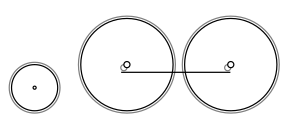2-4-0T

Front of locomotive at left
|
|||||||||||||

LSWR 0298 Class or Beattie Well Tank
|
|||||||||||||
|
|||||||||||||
|
|||||||||||||
| Equivalent classifications | |
|---|---|
| UIC class | 1B |
| French class | 120 |
| Turkish class | 23 |
| Swiss class | 2/3 |
| Russian class | 1-2-0 |
| First known tender engine version | |
|---|---|
| First use | c. 1830s-1840s |
| Country | United Kingdom |
| Evolved from | 2-2-0 & 2-2-2 |
| Benefits | Better adhesion with coupled wheels |
Under the Whyte notation for the classification of steam locomotives, 2-4-0 represents the wheel arrangement of two leading wheels on one axle, four powered and coupled driving wheels on two axles and no trailing wheels. The wheel arrangement is known as a Porter.
The notation 2-4-0T indicates a tank locomotive of this wheel arrangement on which its water and fuel is carried on board the engine itself, rather than in an attached tender.
The 2-4-0 configuration was developed in the United Kingdom in the late 1830s or early 1840s as an enlargement of the 2-2-0 and 2-2-2 types, with the additional pair of coupled wheels giving better adhesion. The type was initially designed for freight haulage. One of the earliest examples was the broad-gauge GWR Leo Class, designed by Daniel Gooch and built during 1841 and 1842 by R and W Hawthorn and Company, Fenton, Murray and Jackson, and Rothwell and Company. Because of its popularity for a period with English railways, noted railway author C. Hamilton Ellis considered the 2-4-0 designation to have the nickname (under the Whyte notation) of Old English.
During 1846-47, Alexander Allan of the newly established London and North Western Railway (LNWR) created the Crewe type of locomotive, with a 2-2-2 wheel arrangement for passenger classes and 2-4-0 for freight. During the 1850s and 1860s these designs were widely copied by other railways, both in the United Kingdom and overseas.
...
Wikipedia
